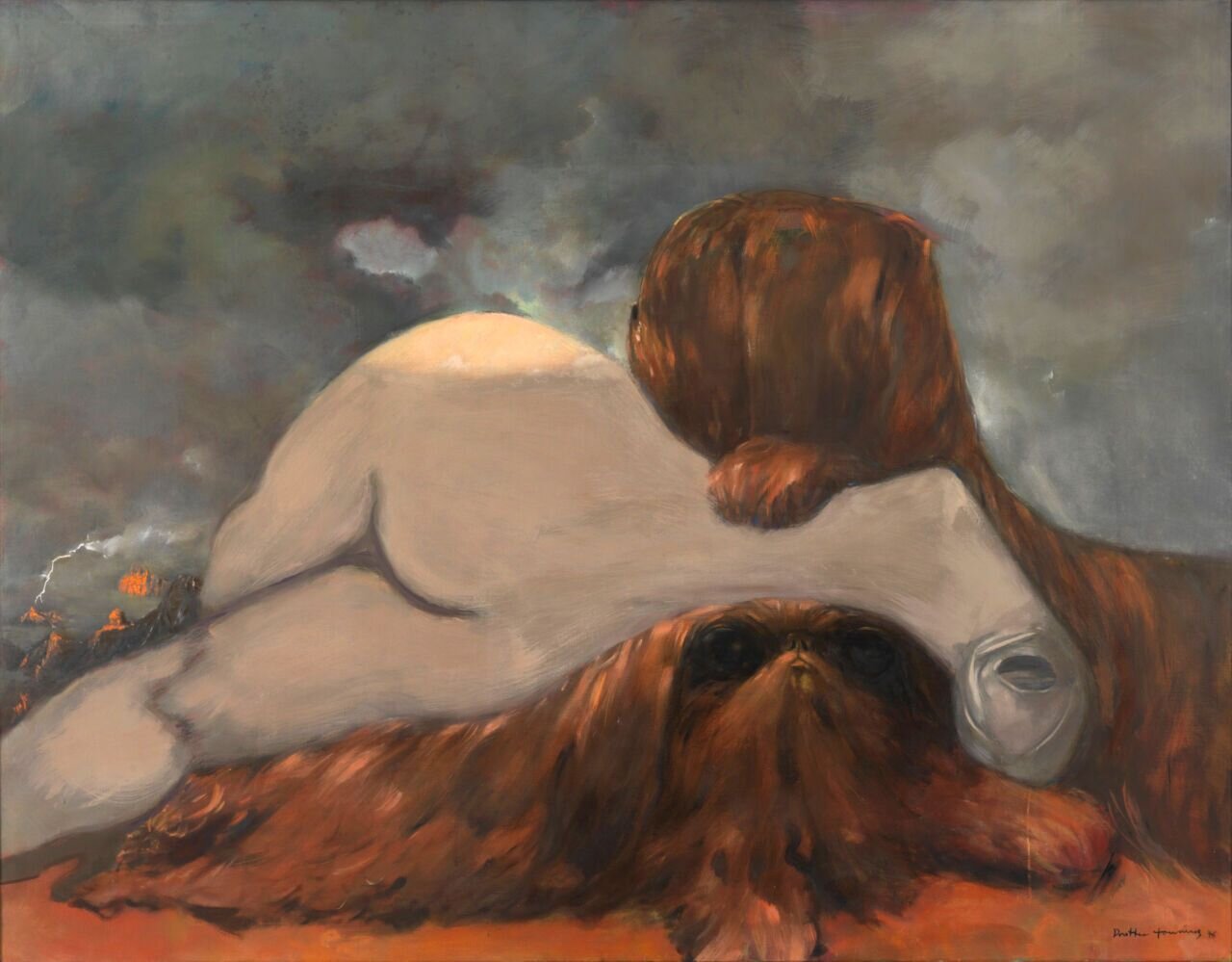PAINTERS ON PAINTINGS
Anne Russinof
Barbara Friedman on Merging and the “Extreme Middle”
Aug 15, 2020
I’ve noticed in myself and among my friends that keeping yourself locked up at home encourages every kind of rumination, especially on the condition of being alone and what it was like to be around other people and when that might happen again.
So it’s not surprising that a piece of writing I’ve been affected by during this isolation is Jack Whitten’s ruminative Notes from the Woodshed (Hauser & Wirth, 2018), a log of his studio jottings made over the course of several decades. There are a lot of passages I might cite, but one I keep coming back to is Whitten’s talk about the “extreme middle,” which he calls the place where the “I” is located. It’s a resting place where “the concrete placement of format” can coexist with the accidental. He makes the “I” out to be “a resting zone … a meeting place.”
Whitten’s reflections on the “I” as negotiated middle ground are visibly at work in his 2008 self-portrait Entrainment. Underneath it I’ve put a very recent painting of mine, Enjambment. I’ve always loved this self-portrait of Whitten’s, but I only noticed its actual name when I was pulling it up for this essay. I’m amused that the painting of mine that I wanted to pair with it has such a similar one-word title.
Jack Whitten, Self Portrait: Entrainment, 2008, acrylic collage and eye glass lenses on canvas, 29 1/8 x 23 inches
Barbara Friedman, Enjambment, 2020, oil on linen, 44 x 55 inches
My Enjambment is an oil painting whose underpainting became the protagonist. Rather than covering up what I thought would merely peek through occasionally, I let the initial alizarin orange layer become the scaffolding of the painting. It only needed a few pieces of opaque blue and one eye to become a Pinocchio, just as Whitten made his painting a self-portrait by merely collaging two glass lenses into the middle of a mosaic of twinkling acrylic tesserae.
Another painting I’ve been thinking about is by Dorothea Tanning, one of the overlooked so-called “Women Surrealists.” I’d never paid much attention to Tanning; but last year at the 2019 Armory show, the Alison Jacques Gallery presented her “historical works.” Tanning’s 1976 painting Evening in Sedona, in particular, really got to me.
Dorothea Tanning, Evening in Sedona, 1976, oil on canvas, 44 7/8 x 57 1/2 inches
I find something irresistible in the strange shape created by the figure and the massive dog with his hidden dark eyes (or are there two dogs?) against the brooding sky. Maybe because being cooped up in an apartment makes me crave the natural world, I’m discovering that odd creatures are spontaneously appearing in my paintings and connecting to each other in unexpected ways. This merging speaks to me, and obviously to Tanning too, who was quoted as saying “I think I have gone over, to a place where one no longer faces identities at all.”
The enforced isolation, and a social life that exists in two dimensions, have made me appreciate the sight of living forms draped over each other, as in Tanning’s painting but also as in this new one of mine:
Barbara Friedman, Cross Purposes, 2020, oil on linen, 51 x 25 ¼ inches
This sense of endless time has made me more patient. It is easier for me to wait for incidents and imagery to reveal themselves though my process. On page 120 of Notes from the Woodshed, Whitten writes, “I want this raw material to be my playpen… a means of doing anything I wish…to exercise every fantasy, myth, every feeling of the absurd within my grasp.” I want all that too. During this chapter of such uncertainty, I let forms appear in their own time. They keep me centered and hold each other close.
Barbara Friedman, Family Man, 2020, watercolor on paper, 16 x 12 inches
Barbara Friedman makes painterly paintings of unreliable narrators in scenarios that are unsettling both narratively and formally. Reviews of her work have appeared in the New York Times, the New York Sun, The Irish Times, Newsday, Art in America, ARTS Magazine, and Artweek. She lives, paints and teaches in New York City where she has been a professor of art at Pace University since 1983.




